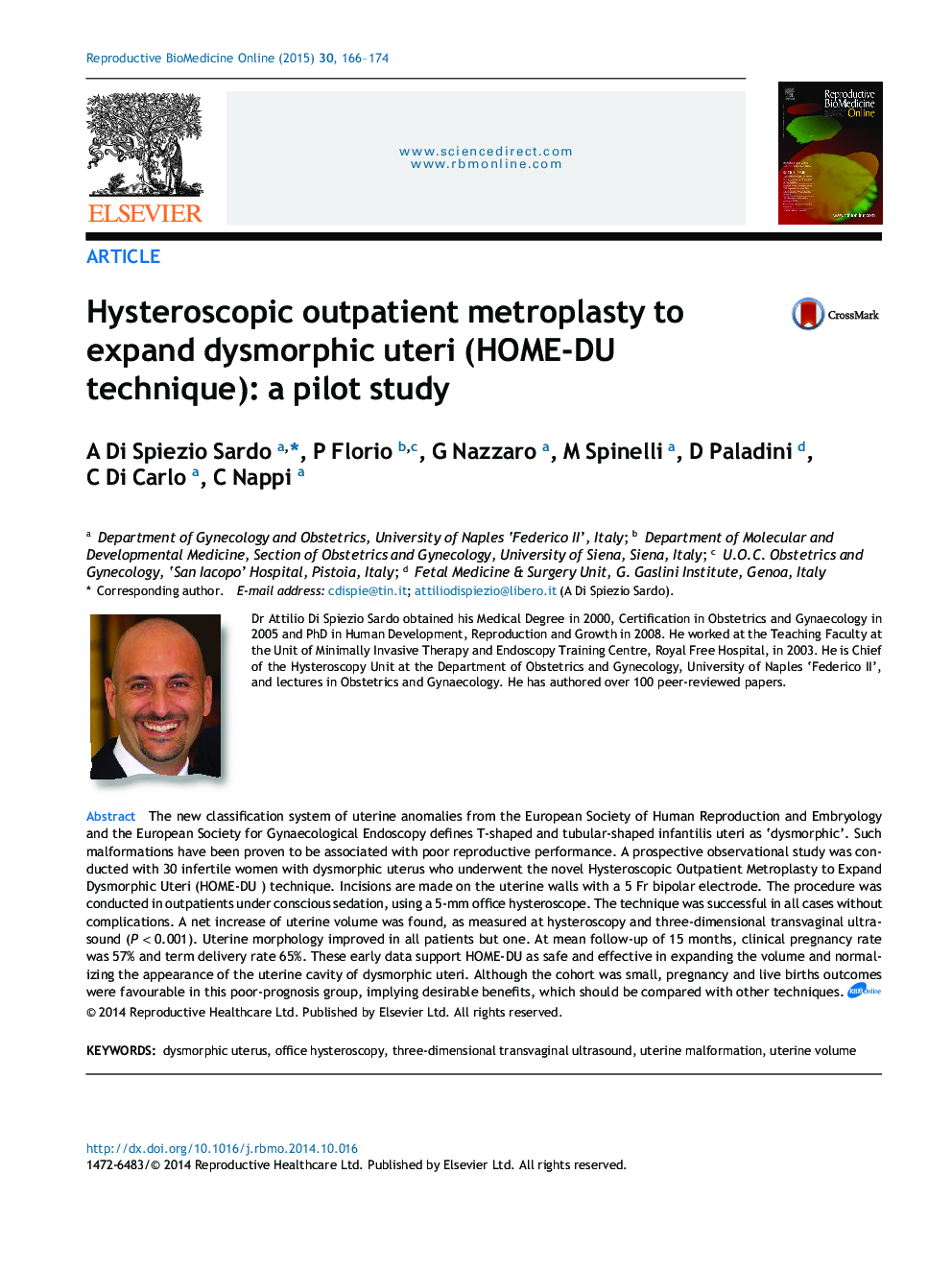| Article ID | Journal | Published Year | Pages | File Type |
|---|---|---|---|---|
| 6188842 | Reproductive BioMedicine Online | 2015 | 9 Pages |
â¢A novel hysteroscopic technique for metroplasty, the “Hysteroscopic Outpatient Metroplasty to Expand Dysmorphic Uteri (HOME-DU technique)” was evaluated.â¢The study was conducted on 30 infertile women with dysmorphic uterus (T-shaped and tubular-shaped/infantilis uteri) - as diagnosed by office hysteroscopy and three-dimensional trans-vaginal ultrasound - who underwent the HOME-DU technique.â¢Our data seem to support the safety and efficacy of such outpatient technique in order to improve the volume and shape of dysmorphic uteri.â¢The improvement of the uterine cavity volume and morphology may offer new approaches in increasing reproductive outcomes.
The new classification system of uterine anomalies from the European Society of Human Reproduction and Embryology and the European Society for Gynaecological Endoscopy defines T-shaped and tubular-shaped infantilis uteri as 'dysmorphic'. Such malformations have been proven to be associated with poor reproductive performance. A prospective observational study was conducted with 30 infertile women with dysmorphic uterus who underwent the novel Hysteroscopic Outpatient Metroplasty to Expand Dysmorphic Uteri (HOME-DU ) technique. Incisions are made on the uterine walls with a 5 Fr bipolar electrode. The procedure was conducted in outpatients under conscious sedation, using a 5-mm office hysteroscope. The technique was successful in all cases without complications. A net increase of uterine volume was found, as measured at hysteroscopy and three-dimensional transvaginal ultrasound (P < 0.001). Uterine morphology improved in all patients but one. At mean follow-up of 15 months, clinical pregnancy rate was 57% and term delivery rate 65%. These early data support HOME-DU as safe and effective in expanding the volume and normalizing the appearance of the uterine cavity of dysmorphic uteri. Although the cohort was small, pregnancy and live births outcomes were favourable in this poor-prognosis group, implying desirable benefits, which should be compared with other techniques.
